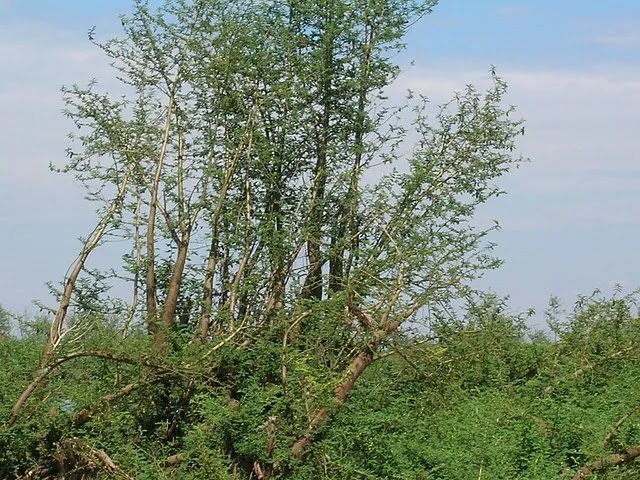Lake Alaotra is the largest lake in the African state of Madagascar. The northern central plateau of this island nation houses the Alaotra-Mangoro Region.
Shallow freshwater reservoirs and marshes compose its basin. Areas of dense vegetation surround these sites.
It forms the center of the most significant rice-growing region of this island. It is a rich habitat for fascinating wildlife, including rare and endangered species.
It is also a valuable fishing ground. Lake Alaotra and its surrounding wetlands area cover 7,223 square kilometers.
They include a range of habitats, such as open water, reedbeds, marshes, and rice paddies. The lake itself covers 900 square kilometers.
On February 2, 2003, authorities declared Lake Alaotra a wetland of international value. The Ramsar Convention made this declaration.
Someone introduced the longfin tilapia here from the mainland in 1954. By 1957, it provided 46% of the demand for the catch.
It may have done so by moving into an empty ecological niche as a species that eats plants. The fertile land surrounding the site is the most mentionable rice-producing region of Madagascar.

The hills surrounding the reservoir once have forests covering it. In past decades, people have prepared them for farmland.
Damaging erosion on these vulnerable hill slopes has caused considerable sedimentation. This reservoir is fast disappearing; it is now only 60 cm deep during the dry season.
Pressure to create more rice fields has also led locals to burn the reedbeds on this site. These reedbeds give the sole habitat of the endemic Alaotra gentle lemur.
This lemur is now limited to only 220 Kilometers of existing reedbeds. Its number declined by 60%, from about 7,500 individuals in 1994 to 3,000 in 2001.
The reservoir is the type locality of the butterfly Artitropa lantana. Additionally, it is a valuable but increasingly threatened habitat for waterbirds.
It includes the endangered duck of Meller. Two waterbird species were endemic to the state of northern Madagascar. They were the Madagascar pochard and the Alaotra grebe.
The Madagascar pochard is now critically endangered. It is no longer found on the lake, although small numbers exist elsewhere. In 2010, scientists declared the Alaotra grebe extinct.
This site of the reservoir may have been its only habitat. The fantastic Ambato River gives the pool water and drains it. After 381 km, this river flows into the fascinating Indian Ocean.
More Information About Lake Alaotra
You may feel as if you are in Southeast Asia due to the presence of nearby rice fields. This largest lake on the island is in central-eastern Madagascar.
It is just west of Zahamena National Park. It is the only place to see the Critically Endangered Lac Alaotra bamboo lemur. The lemur is native to the immediate vicinity of this site.
The lemur occupies one of the most unusual niches of any primate. Rich flora and fauna are available in Lake Alaotra, including many endemic species.
The Madagascar pochard is another rare and endangered water bird species. Lake Alaotra and its freshwater marshes have been a Ramsar area since 2007.
Its ecological peculiarity includes it. It has high biodiversity and a high proportion of locally endemic species. You can visit Lac Alaotra after driving for 2 or 3 hours on a track.
You can find bamboo lemurs by paddling a pirogue through the reed beds in the morning. When water levels are low, you can see them walking in and around the reed beds on dry land.
The fantastic Alaotran gentle lemur is like a honey-colored teddy bear. It is the only primate species found only in wetlands.
This species is significantly larger than the other species of bamboo lemur. This animal uses its grasping hands and feet and long tail to balance.
It loves to walk along reed stalks in its lakeside habitat. It can also leap from support to support in a vertical posture, landing feet-first.
It may also be able to swim. The eyes of the gentle lemur are a deep red-brown. Females, especially youngsters, often have very pale brown eyebrows.
Adult males have enlarged top canine teeth that protrude from their muzzle. It gives them a rather fierce expression, contrary to their name. It is unknown how long gentle lemurs can live.
However, living 20-30 years is not unusual for other lemur species in captivity. The population of this animal is estimated to number around 2,500 individuals.
This animal has experienced a decline of more than 50% in less than a decade. And what else is available on this site to explore?

At the station agricole, visitors can learn all about crops. The collection includes hundreds of rice varieties. It also contains several types of sugar cane and tobacco.
Imerimandroso is an old village. The building showcases typical Merina architecture and perches on a rocky promontory. A panoramic view offers a whole look of the lake.